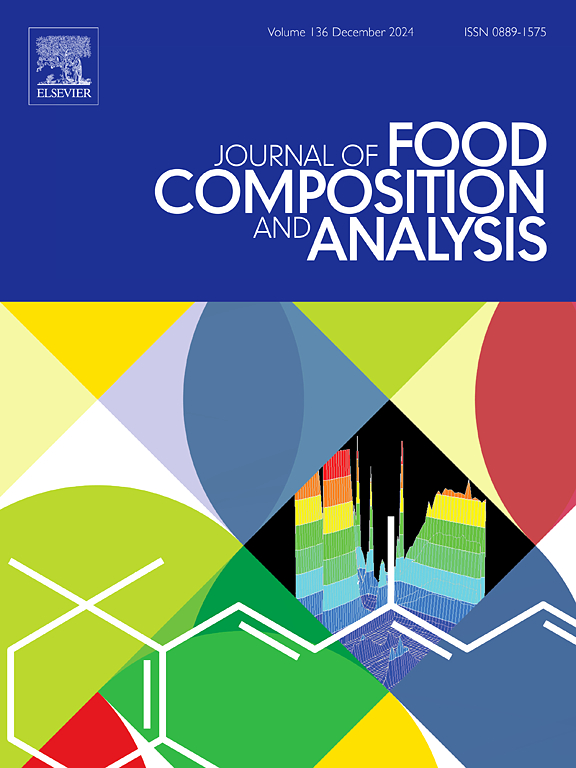Distribution and risk assessment of phthalate esters in different types of royal jelly products based on modified QuEChERS combined with GC-MS/MS
IF 4
2区 农林科学
Q2 CHEMISTRY, APPLIED
引用次数: 0
Abstract
Phthalate esters (PAEs) are common environmental pollutants found in food samples, demanding accurate detection for risk assessment and remediation. In this study, a modified QuEChERS combined with GC-MS/MS was developed to detect phthalate esters (PAEs) in different types of royal jelly products. This newly developed method for fresh royal jelly exhibited excellent performance: it demonstrated a 2–500 µg/L linear range, 4.3–15.2 µg/kg limit of detection, 11.2–31.3 µg/kg limit of quantification, and 84.2 %–108.1 % recovery. Sample analysis disclosed the existence of di-(2-ehtylhexyl) phthalate (DEHP), di-n-butyl phthalate (DBP), diethyl phthalate (DEP), and dimethyl phthalate (DMP) in all three types of royal jelly products, and the detection rates of DBP and DEHP were 100 %. Higher levels of PAEs were present in processed royal jelly products (lyophilized royal jelly and royal jelly in capsule) than in fresh royal jelly samples. Given the restricted PAEs intake doses, royal jelly products are safe for human consumption. This work offers a novel perspective on controlling the quality of different types of royal jelly products.
求助全文
约1分钟内获得全文
求助全文
来源期刊

Journal of Food Composition and Analysis
工程技术-食品科技
CiteScore
6.20
自引率
11.60%
发文量
601
审稿时长
53 days
期刊介绍:
The Journal of Food Composition and Analysis publishes manuscripts on scientific aspects of data on the chemical composition of human foods, with particular emphasis on actual data on composition of foods; analytical methods; studies on the manipulation, storage, distribution and use of food composition data; and studies on the statistics, use and distribution of such data and data systems. The Journal''s basis is nutrient composition, with increasing emphasis on bioactive non-nutrient and anti-nutrient components. Papers must provide sufficient description of the food samples, analytical methods, quality control procedures and statistical treatments of the data to permit the end users of the food composition data to evaluate the appropriateness of such data in their projects.
The Journal does not publish papers on: microbiological compounds; sensory quality; aromatics/volatiles in food and wine; essential oils; organoleptic characteristics of food; physical properties; or clinical papers and pharmacology-related papers.
 求助内容:
求助内容: 应助结果提醒方式:
应助结果提醒方式:


